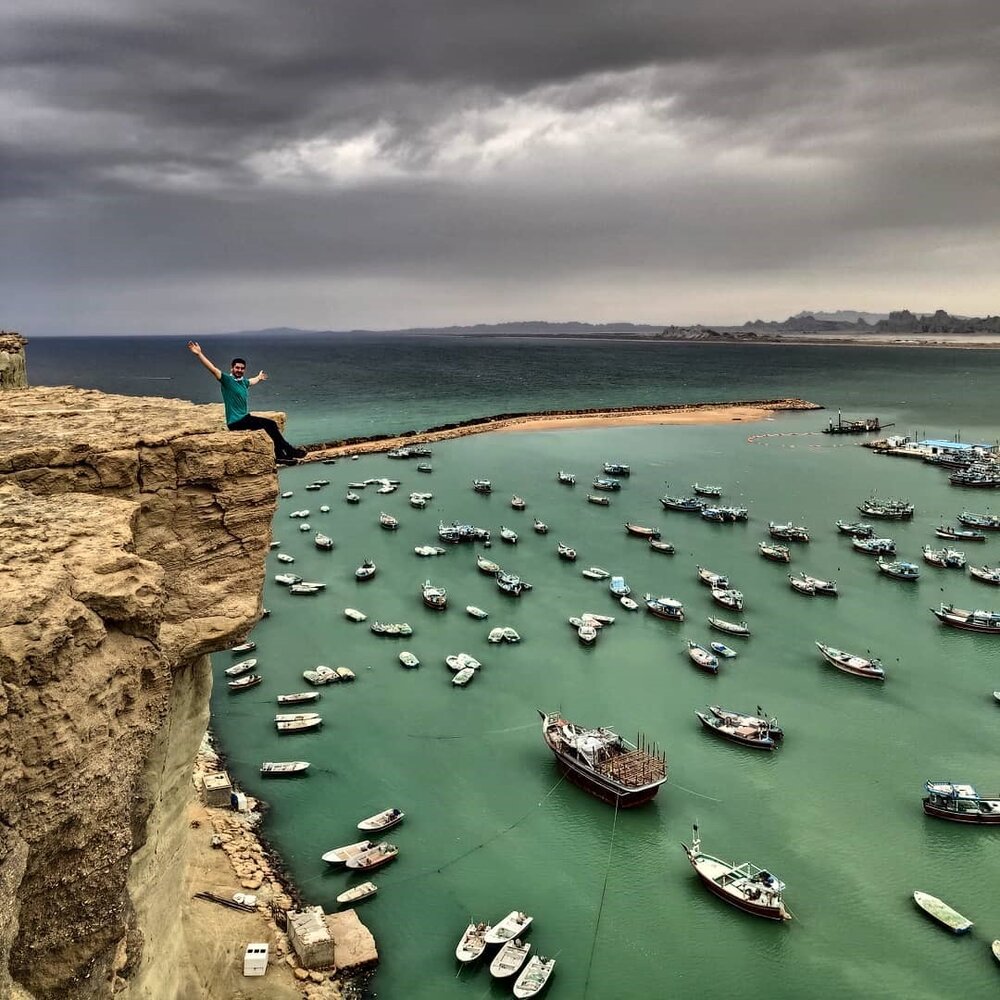Take a trip to the unknown, to rugged shores of Makran

TEHRAN - Makran coasts are all about its rugged rock formations, dramatic dunes, and relentless waves crashing upon jagged boulders, which are perfect in winter.
The coasts of Makran or Makuran – as it is pronounced by the local people – is a region comprising about 1,500 km of shoreline along the Sea of Oman and the Indian Ocean, which is stretched from Iran’s Hormozgan, and Sistan-Baluchestan provinces to Pakistan’s Balochistan province.
It offers visitors a dramatic setting to discover one of the most breathtaking, and arguably more scenic, sandy stretches in southern Iran.
Iranian tourism officials and experts believe that the natural and historical attractions of the Makran coastal strip hold considerable potential to be registered on the UNESCO World Heritage list.
Makran coasts embrace some unique attractions such as Darak village, Martian Mountains, pristine beaches of Chabahar, and sacred fig trees to name a few.
Darak village and Martian Mountains, commonly known as Miniature Mountains, which are located on the Makran coast, are also among the top tourist destinations in the region that eye to gain a UNESCO tag as well.
Located between the two important port cities of Chabahar and Bandar Abbas, Darak is one of the few places in the world where the sea and the desert meet. Darak or Darag in the local language means settling along the sea.
The beach and the amazing village, along with the Oman Sea, are tourist destinations where dunes, palm trees, and blue sea in a frame together create fantastic scenery.
Hiking, swimming, and photography are among the best activities tourists could enjoy while traveling to Darak Beach. It is known for its extraordinary beaches and has a pristine shoreline.
Mars or Martian Mountains, also known as “Koohaye Merikhi” in Persian, are a type of badlands stretched out parallel to the Gulf of Oman. Their current shape results from millions of years of erosion by wind and water. The height of the mountains varies between five to over 100 meters.
Locals named them Martian Mountains since it seemed as if aliens – in this case, people from Mars – built them; with almost no vegetation, their curvy scenery stands in strong contrast with the landscape around.
Throughout history and before Omani Arabs gained a more dominant position, this shoreline had been recorded in history as the Sea of Makran.
The Makran coast starts from Alkouh region north of Iran’s Mina port and is considered an Iranian coast until it reaches the border between Iran and Pakistan in Gwater Bay in Iran’s Sistan-Baluchestan province.
The narrow coastal plain rises rapidly into several mountain ranges. The climate is dry with little rainfall. Makran is very sparsely inhabited, with much of the population concentrated in a string of small ports including Chabahar, Gwatar, Jiwani, Jask, Sirik, Gwadar (not to be confused with Gwatar), Pasni, Ormara, and many smaller fishing villages.
Makran, the ancient Gedrosia of the Persian and Macedonian empires and the scene of Alexander the Great’s retreat from India (325 BC), has been strategically significant in the history of Iran and India, according to Britannica.
The etymology of the name is uncertain, chiefly regarded either as a corruption of Mahi Khuran (Fish Eaters), identified with the Ichthyophagoi (now represented by the Meds) mentioned in the Indica of the 2nd century CE.
AFM/
Leave a Comment